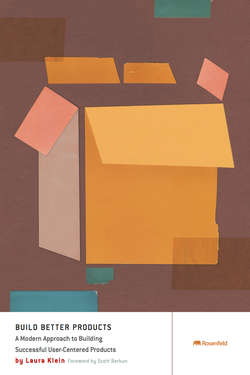Читать книгу Build Better Products - Laura Klein - Страница 53
На сайте Литреса книга снята с продажи.
STEP 2: Recording and Synthesizing the Data
ОглавлениеAs you ask these questions, it’s a good idea to have somebody else on your team along for the research. It doesn’t matter who it is, and it’s always a good idea to bring different people along so that more people get exposed to the research process. Anybody who makes decisions should be involved to some extent in the research and should absolutely participate in the synthesis of the results. If you have a researcher, that person may be the one asking the questions, but product managers and designers should also participate directly in the vast majority of research sessions, if not all of them.
At the end of each research session, take 15 minutes and a stack of sticky notes. Everybody on the team who viewed the session should spend about 10 minutes writing down what they heard, one idea per sticky note.
Next, write down the answers to specific questions you asked. Try to capture problems you identified, big complaints that the participant had, and anything interesting or related that you observed.
After you’ve written down all of your observations, separate the problems from the behaviors.
An example of an interesting behavior might be something like, “The participant recorded all her cost of goods in a custom Excel spreadsheet that she updated once a week.” A problem might be, “The participant often finds discrepancies between her bank statement and what she’s recorded.”
Problems will help you find gaps in your current product or in the market for you to fill with new features. Behaviors, on the other hand, will help you understand your users better and design something that fits nicely into their lives. For example, if you find that people always use your product while commuting, that’s a behavior. It won’t necessarily help you decide exactly what product or feature to build first, but it might help you decide to focus more on mobile or to make design decisions that allow for the product to be used on the train.
